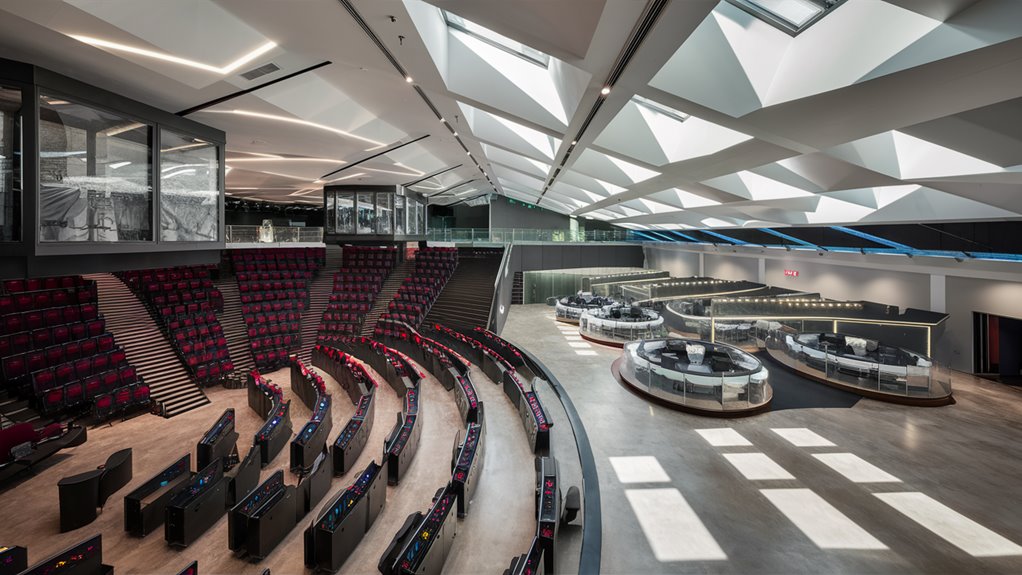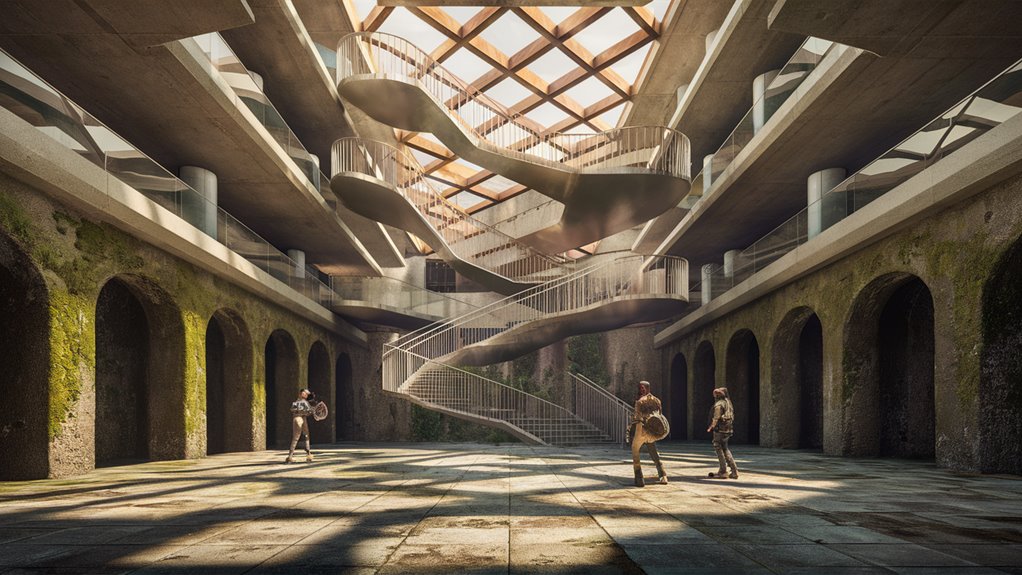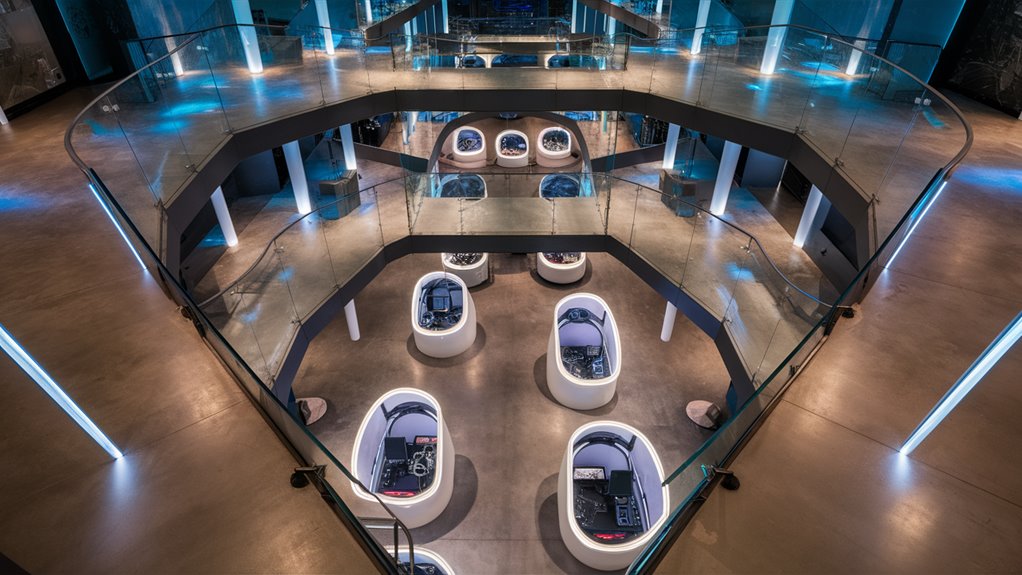
Game Design: Smart Layouts for Better Play

Basics of Game Area Design
Smart level design changes how we play by making player paths that are easy to follow yet fun. By using architectural parts on purpose, makers build areas that lead and test players while keeping them in the game world.
Main Parts for Player Moving
Big spots and changing lights are quiet helpers for finding the way, moving players without taking over their choices. Smart view lines and steps up and down keep players moving smoothly, adding to the fun of finding new places.
Focus on Fighting Architecture
Smart spots for cover and many paths make fighting in the game lively and reward clever thinking. High and low play spots and narrow choke points make the game fair while keeping it diverse.
Stories Told Through Buildings
Stories from surroundings come out by mixing in building looks, old marks, and cultural items. These tell the game’s stories quietly and make the experience deeper, feeling true to the game’s world.
Making Player Movement Smooth
Smart view lines and rising challenge levels keep players hooked while stopping them from feeling stuck. Clues from the area and the beat of spaces guide players naturally without cutting back on challenges or surprises.
How It Changes Player Experience
Shape and use in game buildings make playing unforgettable by:
- Making the world pull you in
- Easy-to-follow paths
- Lively play spots
- Smooth storytelling through the game
Signs in Game Areas: Basics You Need
Making Easy Paths for Players
Good game area design needs smart use of visual signs that help players while keeping them in the game.
Storytelling through the place using smart lights, building parts, and land tricks make natural paths that lead player moves.
Lines, different colors, and smart light spots are quiet yet strong guides showing important paths and goals.
Navigation by Landmarks
Clear marks are key for good path design, acting as spots players remember from different views and distances.
These can be main building points, unique land parts, or lights that stand out from the rest.
Rather than just saying where to go, good area design makes a natural order that players can understand and follow on their own.
Showing New Areas Bit by Bit
The trick of showing bits at a time keeps players into the game by just showing bits of what’s ahead.
This method uses partly seen parts and smart view lines to build excitement while keeping some mystery.
Such smart level design pushes players on by making them want to explore, making sure they keep moving through the game space while still feeling the thrill of finding new things.
Main Design Parts
- Building paths through smart design
- Using differences in the environment to point out key spots
- Lighting that leads player eyes
- Strong marks for knowing the space
- Smart sight lines that show important paths
How Players Move in Game Design
Understanding How Players Move Naturally
Player movement ways are easy to guess and smart game makers use this to make fun games.
Players look for the best paths while they seek fun game ways, making flow important in level design.
By designing the environment well, creators can guide players softly without taking away their free will.
Designing Easy-to-Follow Path Systems
Creating good movement flow needs main paths that feel right, supported by extra routes that let players explore.
Smart spots for important paths along clear sight lines, mixed with signs like lights, building parts, and different ground levels, make natural ways to find paths.
Visual marks at big choice spots act as strong indicators of movement, pulling players through the game area 먹튀검증사이트
Rhythm and Space in Movement
Player paths are more than just walking – they mix with game beat and place rhythm.
Good level design puts tight and open spots in turn, making a lively flow that keeps players into the game while guiding how fast they move.
Smart places for things in the way, more paths, and interesting spots change player paths while letting them choose and feeling the joy of finding new things.
How to Design Fight Areas for Top Games

Basic Needs in Arena Design
Fight areas are key for great PvP and PvE, needing careful thought about space balance and deep tactics Cap on deposits
Great arena design uses smart spots for cover, different high spots, and blocked views.
By using not even layouts that are fair, these fight spots make lively settings that reward good play and smart choices.
Main Design Rules
Clear, Easy, and Safe
Great arena design relies on three main ideas: easy to see, easy to reach, and good for safety.
Visual marks and clear view lines let players understand the space fast, while many ways in stop holding spots and cheat starts.
High and safe spots give even chances for attack and defense across the fight area.
Stories Told by Buildings in Game Design
Building a Story with Structure Parts
Building parts act as big story tools in game places, changing still areas into lively story holders.
Smart spots for building hurts, old marks, and place details tell important story bits without needing clear talk or story parts.
Building Design Ideas for Story Effects
Every building choice should push the story forward.
Breaking buildings show past fights, while growing plants show time passing.
Big or small ceilings play with player feelings – big church spaces make us feel small, while tight spots make things feel close and full of worry.
Layers in Environmental Stories
Making True Scenes
Stories from environments grow deep by smart layering of details.
A messed-up work spot with moved papers sets the scene, while signs of fight like broken safety steps and marks of battle build full story turns.
Matching Looks with Game Action in Level Design
Basics in Visual Design
Looks and game moves must match well within game areas, with no part left out.
Good level design needs every art part to have a clear game use.
From smart lighting guiding player moves in halls to well-placed building parts making spots for cover, each design choice touches both look and use.
Color and Building Together
Great game place design stays on point by keeping a tight balance between looks and game needs.
Color plans do two jobs – making the game world pull you in while clearly showing spots you can use and danger areas.
Building bits like columns and bends help by making important view lines, framing main goals, and setting the space beat for fight spots. These parts work together to lift both the look and the flow of the game.
Main Design Parts:
- Stories told through careful building
- Guiding players with smart light use and colors
- Important sight lines made by building parts
- Space beats in fight areas through building rhythm
- Visual order helping game goals